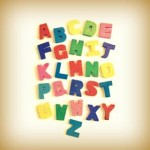RDI is alot of “thinking about thinking.” And verbalizing it. Just now, Zip asked me for juice. He had taken the juice bottle out of the fridge but cannot pour it himself yet. I noticed that the cup that he’d just used wasn’t there, so I asked him, “Where’s your cup?” (Quick aside – I should have turned it into a better moment by musing out loud, “Hmmm… wonder what we could put the juice in…” but I just thought of that as I was writing this.)
Zip has almost no ability to find things like a cup in the next room. So I began saying what I was doing, “I need to find your cup. Maybe it’s in this room. Your cup wasn’t in the kitchen so I need to go look for it.”
After a moment or two, he followed me into the den where his cup was very visible on the table. So, together, we found the cup and brought it back to the kitchen to fill with juice. Mission accomplished, and just as much for me as for him. I need to do more of this verbalizing my thought processes with him. It gets difficult in the rush of the day. Repeat after me: “Slooooow down. Verbalize.”
 One of our current RDI objectives is to work on more engagement with Zip. Now that we’re back home after losing power for four days again because of the heavy wet snowstorm, we’re trying to get back to our brand of normality. The house is mostly clean, the laundry is mostly done and I planned our homeschool assignments for the week.
One of our current RDI objectives is to work on more engagement with Zip. Now that we’re back home after losing power for four days again because of the heavy wet snowstorm, we’re trying to get back to our brand of normality. The house is mostly clean, the laundry is mostly done and I planned our homeschool assignments for the week. In typical development, usually around the age of 12 months of age, the child discovers a new way to deal with uncertainty. When confronted with a new object, person, or task, he realizes he is feeling uncertainty but is not afraid. He starts to trust a more experienced guide to help him understand the world. He recognizes that he can study unfamiliar objects, persons, or tasks to determine whether to engage with them. He checks in with the guide to decide how to react to the new thing. This is easily seen in an infant when he looks at his mother when a new toy is placed on the floor. Mom smiles at him and the reassured baby reaches out to touch the toy. If mom had frowned or acted scared, the baby would realize that he should be wary or afraid.
In typical development, usually around the age of 12 months of age, the child discovers a new way to deal with uncertainty. When confronted with a new object, person, or task, he realizes he is feeling uncertainty but is not afraid. He starts to trust a more experienced guide to help him understand the world. He recognizes that he can study unfamiliar objects, persons, or tasks to determine whether to engage with them. He checks in with the guide to decide how to react to the new thing. This is easily seen in an infant when he looks at his mother when a new toy is placed on the floor. Mom smiles at him and the reassured baby reaches out to touch the toy. If mom had frowned or acted scared, the baby would realize that he should be wary or afraid. Zip and I keep working on patterns in putting things in or out of things. He’s definitely got the idea but doesn’t reference me much yet. A few days ago, we began to put clothes in the washing machine. Instead of putting the basket right next to the washer, I left it a foot or two away. Now, Zip and I were in true assembly-line. I gave him the role of handing me the clothes and he really took it on. Sounds silly, but in this position, it made it clearer to him and he carefully handed me each item. Since we could face each other now, he paid much more attention to me and made sure I got each item. Other times, he hasn’t seemed to notice whether I dropped it or got it.
Zip and I keep working on patterns in putting things in or out of things. He’s definitely got the idea but doesn’t reference me much yet. A few days ago, we began to put clothes in the washing machine. Instead of putting the basket right next to the washer, I left it a foot or two away. Now, Zip and I were in true assembly-line. I gave him the role of handing me the clothes and he really took it on. Sounds silly, but in this position, it made it clearer to him and he carefully handed me each item. Since we could face each other now, he paid much more attention to me and made sure I got each item. Other times, he hasn’t seemed to notice whether I dropped it or got it. I have to admit that I didn’t learn to study until I went to college, and boy, was that a rude awakening! Thankfully, we’re not talking about hitting the books in our newest RDI objective. Instead, our consultant wants to see and hear about Zip studying what to do. This goes along with him beginning to recognize patterns. I need to start noticing when he thinks about a situation where he is not sure what to do.
I have to admit that I didn’t learn to study until I went to college, and boy, was that a rude awakening! Thankfully, we’re not talking about hitting the books in our newest RDI objective. Instead, our consultant wants to see and hear about Zip studying what to do. This goes along with him beginning to recognize patterns. I need to start noticing when he thinks about a situation where he is not sure what to do. We had a great week last week. Zip is feeling so much more guid-able. Is that a word? Perhaps I should define it. Just in the last few weeks, Zip has begun listening to me, doing what I say, staying near me when we’re out. It’s a remarkable change. I have to chalk it up to Dynamic Listening.
We had a great week last week. Zip is feeling so much more guid-able. Is that a word? Perhaps I should define it. Just in the last few weeks, Zip has begun listening to me, doing what I say, staying near me when we’re out. It’s a remarkable change. I have to chalk it up to Dynamic Listening.